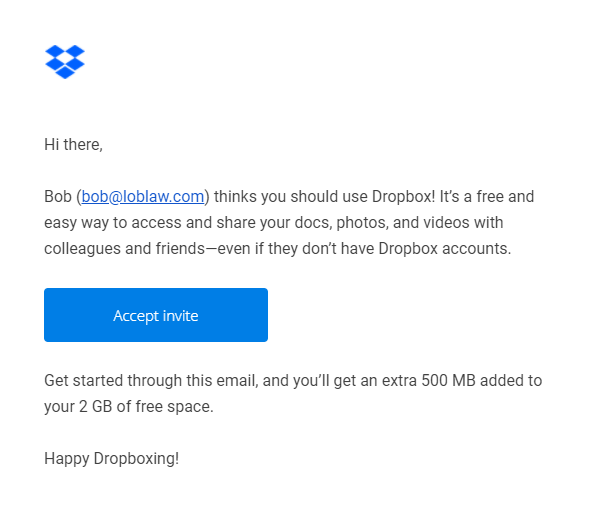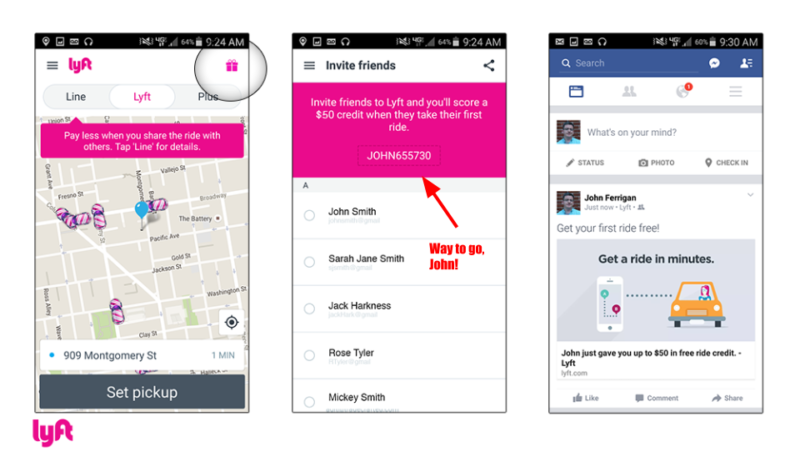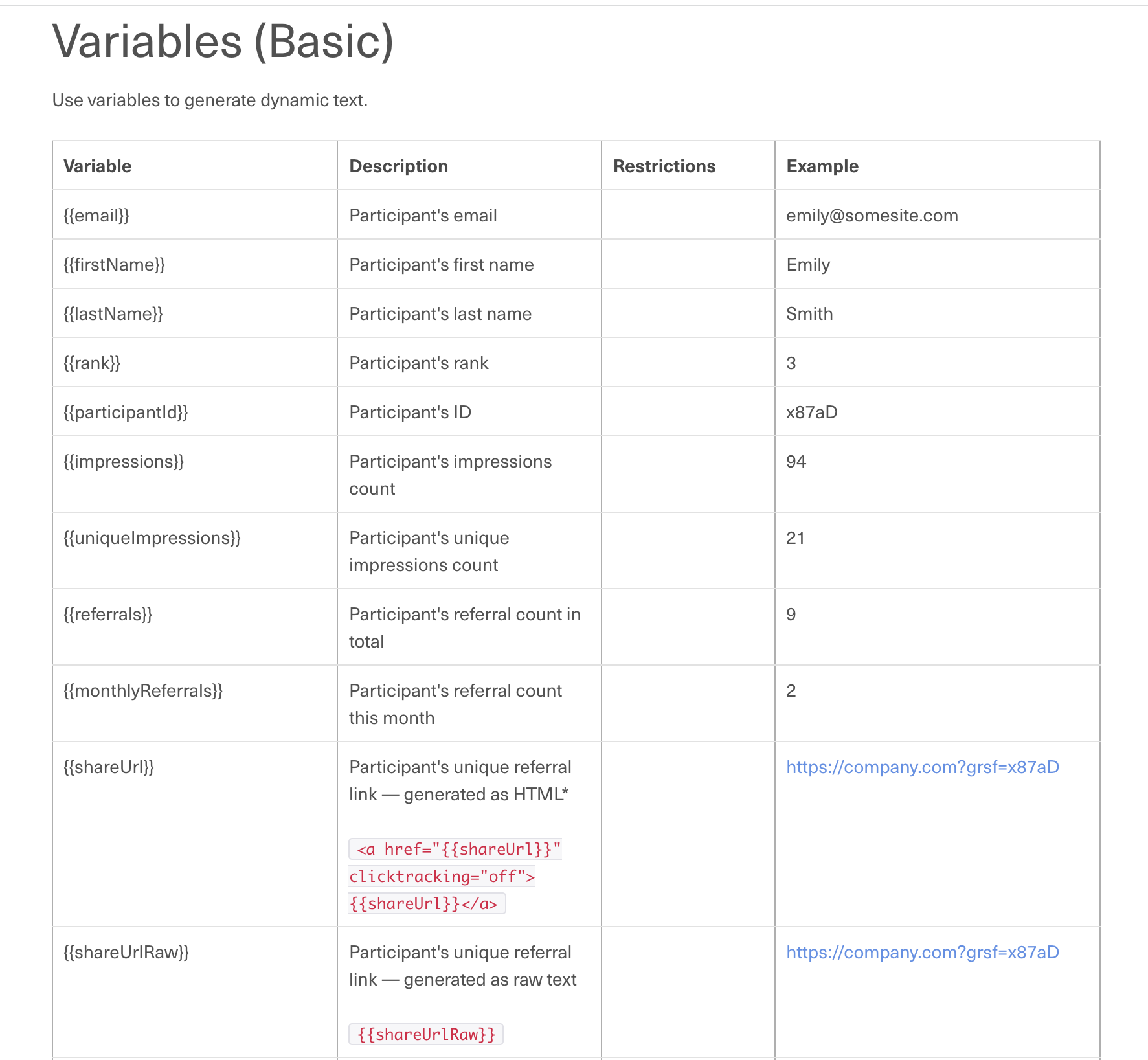Put your growth on autopilot
GrowSurf is modern referral program software that helps product and marketing teams launch an in-product customer referral program in days, not weeks. Start your free trial today.
Imagine walking into a bakery on your way to work. The girl working at the register greets you as you walk in and asks: a jelly croissant and americano to go, Kate? You smile politely, knowing you'll return to this bakery again and again. These people just seem to get you.
This is one example of personalization. It's a powerful tactic that can make the difference between businesses that succeed and those that struggle.
But what is personalization in referral marketing? How do you incorporate it in your referral marketing campaigns?
Stay tuned as we explore the topic in more detail below!
Personalized marketing is about sending relevant, useful, and highly-targeted content that your audience would want to receive. In a nutshell, you're taking their likes, preferences, and interests into consideration to create marketing experiences that target specific types of customers.
But what kind of information is critical for personalized marketing?
Data like age, gender, occupation, interests, email preferences, past purchases, and browsing history can help you craft content that makes it clear to your audience that you understand their unique needs and expectations.
Is personalized marketing a Herculean task?
It doesn't have to be. Your CRM or email marketing tools are a goldmine of customer data that you can use to your advantage. With the right tools and the right data, you can create personalized marketing content easily, cost-effectively, and in an advanced manner.
And what happens if you don't incorporate personalized marketing in your strategy?
You can end up sending irrelevant, boring, and often frustrating content that will only manage to leave a negative impression of your brand.
Here are three reasons why personalization in marketing works:
Customers expect it. According to research by Salesforce, 52% of customers expect offers to always be personalized. This is an increase of 3% from 2019. What's more, 66% of customers expect companies to understand their unique needs and expectations. Despite this, 66% say companies, in general, treat them like numbers, and not human beings. By understanding your target audience, you'll be able to deliver an exceptional customer experience that is critical in today's world.
You'll grow your revenue. Studies show that 91% of consumers are more likely to purchase from a brand that provides relevant offers and recommendations, and 63% of consumers will stop buying from brands that use poor personalization tactics. And get this: personalized content drives repeated purchases in 44% of consumers.
Personalization increases brand loyalty. When a brand knows a customer's name, needs, and preferences well, that brand is more likely to have a band of loyal customers. One 2017 report found that 56% of consumers are loyal to brands that truly understand their priorities and preferences. And loyal customers make repeated purchases and tend to spend more on each purchase. What's more, retaining customers is more cost-effective than acquiring new customers.
Customers expect great experiences. However, reality often falls short.
Instead of saying, "This brand understands me," customers end up deleting your emails, bouncing from your website, and unfollowing you on social media.
This doesn't have to happen to you.
Let's see how you can personalize your marketing in four simple steps:
An ideal customer profile (ICP) is a fictitious representation of the type of company that is most likely to buy your product or service. When crafting an ICP, you include the size of the company, the industry they're in, the number of employees, their budget, and why they need your product or service.
For example, your ICP might be the following:
These are the qualities the ideal customer has to possess in order to purchase from you. If they don't meet these requirements, then you can disqualify them from your sales funnel and have your sales team focus on leads that are a better match.
Ultimately, creating an ICP can help you define the problems your product/service solves, align your product/service capabilities with customers' needs, and assist in planning future product/service updates and changes.
What is the best way to improve your email marketing campaigns' response and engagement rates? You segment your email list!
If you have several buyer personas, you can use them to create segments. You can also create segments based on factors like age, profession, location, income level, etc. Another popular way to segment your email list is by engagement. For instance, you send one email campaign to your active subscribers and another to your inactive subscribers.
User segmentation is easily done with the help of tools like Hubspot, MailChimp, Google Analytics, ActiveCampaign, etc.
For example:
In short, you'll target the right people with the right message at the right time.
Subject lines are the most critical element when crafting marketing emails. They give your subscribers a preview of what content awaits them when they open the email.
By reading your subject line, subscribers decide whether they want to open the email or send your email to the Trash folder.
Just like a movie trailer that fails to capture viewers' attention if it's poorly done, subscribers won't open your email if nothing grabs their attention.
And if you thought that throwing in a subscriber's name in the subject line would suffice, think again. This trick doesn't work as it used to a couple of years ago. Today, your subscribers want to see subject lines that are highly targeted and based on their interests.
In short, your subscribers should quickly get the idea of what's inside the email by reading the subject line. If it's a newsletter, adding the keyword Newsletter somewhere in the subject line would do the trick.
Subject lines are not the time or place to get philosophical — they should be clear and concise. The recommended length is no more than 50 characters.
Here's something else: great subject lines use actionable language. By including a verb like watch, get, download, reserve, buy , etc., the reader will know exactly what they can do in the email.
Personalization in marketing requires data. And not just any data: it needs the right data.
And who holds that data?
Your customers, of course.
They are key to crafting highly-personalized marketing campaigns that work.
With that said, consider sending out surveys and feedback forms to ask your customers important questions that will improve your marketing efforts. For instance, you can ask them what they like about your product, what they dislike, what new features they want to see, how often they use your product, what their pain points are, etc.
Here's another excellent idea: to get more people to answer your survey, offer incentives like discounts or free educational content.
Personalization doesn't only work in email marketing and social media. It can also be incorporated into your referral marketing campaigns! Here are three ways how to do it properly:
The referral message is a message sent from the referrer to their network, which could include friends, family, colleagues, or other business contacts.
These messages often include either a referral code or a referral link. Some referrers go to great lengths to craft the perfect referral message to maximize the opportunity for referral rewards.
They can be emailed, or instant messaged.
When a referrer sends a referral message to a friend, it’s a good idea to include a bit of personalization. The referral message will seem more personal and less generic.
One great tactic is to use the referrer's name in the message. For instance, here's how Dropbox has crafted its referral message:

Another idea is to use the referrer's name in the referral code. This is an effective trick as the referred will be reminded of who the referrer is, and they'll be more likely to remember the code.
Here's an example from Lyft:

When you run a referral program, email is your best friend. You send refer-a-friend emails when you want to let your customers know about your program and the rewards they can earn.
Creating a good referral email can be complex, considering 75% of marketing emails are never read. And when they are read, 50% aren’t considered useful.
So, how do you avoid the trap of having your emails never be read or withering away in Spam folders?
You apply personalization!
And personalization starts with your subject line and preheader text. Your customers should know what they can expect to find inside the email by looking at these two elements. They should be personalized, on-point, and catchy.
For instance, your subject line can say:
Jason, earn $20 with our Referral program.
And your preheader text can say:
Share your link.
Once you get your subject line and preheader text right, it's time to personalize the email copy.
Personalization in digital marketing is more than just inserting the customer's name into the email.
When crafting your email, you should consider the recipient's past behavior. Have they opened the last emails from you? Have they once joined your referral program but dropped out? Are they frequent buyers or leads?
Knowing the right data can help you craft the best referral emails that will convince people to take action.
Sending the email at the right time is another example of referral email personalization. For instance, one of the best times to send a referral email is when a customer is engaged with your brand. They might have signed up for an account, made a purchase, subscribed to a higher plan, etc.
Tools like GrowSurf let you use dynamic text to help you create emails that are personalized to each email recipient to improve open and click rates.

Learn more here: https://support.growsurf.com/article/213-guide-to-using-dynamic-text-in-growsurf-emails
Additionally, you can customize your referral email by setting up a custom email address like in the example below:

Let's get something out of the way: what are social share messages?
Social share messages are the messages posted by a brand ambassador on their social media in an attempt to promote your referral program and convince their friends to join.
But here's the thing:
If the social share message is too generic and boring, people might decide to ignore it. But if it's personalized and catchy, it can convince people to join the referral program.
As a rule, social share messages should be short and on-point, and highlight the rewards and benefits that people can get by joining the program.
One great tactic for personalization is to ask your brand ambassadors to use personal pronouns when they share your referral program. Instead of writing in the third person, they can write a message in the first person explaining the main reasons why a referred person should sign up for the program.
Here's how personalizing your social share messages looks like using the Growsurf software:

Consider creating a social share messages template that brand ambassadors can use to promote your program on social media.
It's simple: personalized marketing is your best bet if you want to win hearts and wallets.
By using personalization in marketing correctly, your customers will feel like royalty and not like just another name in your list.
It's important to remember that getting your personalization strategy right might take time. You should consider A/B testing your campaigns to learn which personalization tactics are the most effective and have the biggest impact on your marketing metrics.
To sum up:
Sign up for a free trial of GrowSurf to lower your customer acquisition costs, increase customer loyalty, and save gobs of time.


GrowSurf is modern referral program software that helps product and marketing teams launch an in-product customer referral program in days, not weeks. Start your free trial today.
How do you make referral marketing work for your education service? These 10 education referral program examples should give you ideas.
Generating leads for insurance companies isn't a straightforward process. Thankfully there are a number of insurance marketing ideas to help you gather leads:
Referral fraud is an unhappy fact of running referral programs. Thankfully, there are ways to identify, prevent and deal with referral fraud.
Writing an effective referral message is critical to the success of your referral program. Follow these referral message examples to bring in leads and revenue.
User segmentation allows us to break down a larger user base into smaller groups. Why? All the better to market to in a personalized way:
Yes, refer-a-friend emails can be an effective tool in any tech startup's arsenal, but how do you craft the perfect one? Read on and find out!